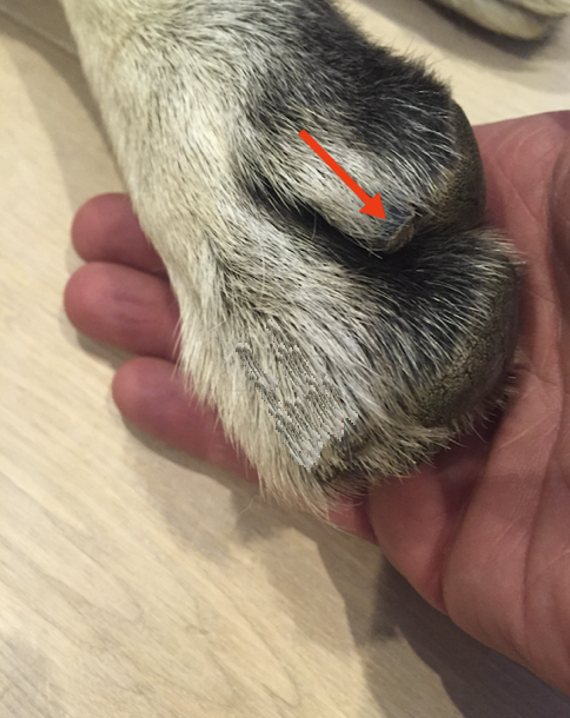The 5 Stages of Degenerative Myelopathy
Jan 21, 2022
Staging Degenerative Myelopathy
I like to divide DM into five stages. This helps when tracking how the disease is progressing and allows my clients to set objective benchmarks to use in making quality-of-life decisions . None of the stages is exact, as every patient is different and will progress at a different rate through these five stages. The stages provide good benchmarks for what to expect, but there can be some overlap in terms of clinical signs.
The average age at which clinical signs begin to appear is eight to 14 years. Typically, the patient will progress through all the stages within a 12- to 18-month time frame. The cumulative oxidative damage to the spinal cord white matter doesn’t appear until later in life, which explains why dogs with DM don’t respond to treatment. By the time the dog displays symptoms, the damage is already done.
The number-one question about DM that I hear from clients is about bladder and bowel function. These are generally normal in the early stages of the disease, but, as the disease progresses to the mid- to late stages discussed below, urinary and fecal incontinence will develop in conjunction with hind-limb paralysis.
The Five Stages of Degenerative Myelopathy
- Early Stage (slight signs)
- Early to Mid-stage (neurological deficits noted)
- Mid-stage (partial paralysis)
- Late Stage (complete paralysis)
- Final Stage (ascending paralysis to front limbs)
Most dogs with degenerative myelopathy initially present with clinical signs of spasticity and general proprioceptive ataxia in the pelvic limbs. This varies from patient to patient based on the stage at which the dog is brought in for clinical evaluation. As we discuss below, the first time we see a patient with DM, it will typically fit into the early-stage to mid-stage categories in terms of clinical signs.
1. Early Stage
Clinical signs include:
- Weakness in rear legs
- Slight change in gait
- Change in tail position
- Scuffing of rear paw pads
- Wearing of innermost rear paw nail
- Signs associated with hip dysplasia:
- The dog has difficulty getting up from a lying position
- Hindquarters appear to sway when walking

The photo above of the hind-limb paw of a dog with degenerative myelopathy shows the worn-down, inner-most nail, which can be a clinical sign of the disease.
2. Early to Mid-stage
The clinical signs in early to mid-stage DM include:
- Beginning to have difficulty standing up
- Swaying in the hind end when standing
- Scraping all rear paw nails intermittently when walking (creating a click-click sound)
- Early evidence of a loss of muscle mass in the hind limbs
- Tail movement becomes less active
- Rear legs start to cross each other when walking (worse when the dog turns)
- May start to see urinary and fecal incontinence
- May start to see knuckling when walking
- May start to see delayed righting-reflex response times

The photo above is of a dog demonstrating a neurologically compromised standing position on the left hind limb that’s usually referred to as knuckling.
Mid-stage
The clinical signs of mid-stage degenerative myelopathy include:
- Loss of tail movement
- Jerky movement in the hind limbs when trying to walk
- Falling down when walking or standing (“drunken sailor”)
- Cross extensor response—when one rear paw is touched, the other rear paw moves
- Asymmetric weakness progressing to paraplegia
- Easily falls over if lightly pushed
- Wobbling and unable to maintain balance when standing
- Knuckling of the hind paws when trying to walk (very obvious when turning)
- Feet scraping on the ground when walking (constantly)
- Inability to walk
- Partial paralysis of the hind limbs (knuckling)
- Urinary and fecal incontinence
3. Late Stage
The clinical signs of late-stage disease include:
- Complete paralysis of the hind limbs and loss of all motor function
- Loss of all sensory and deep-pain reflexes
- Hyporeflexia of the myotatic and withdrawal reflexes
Complete urinary and fecal incontinence
4. Final Stage
The clinical signs of final-stage disease include:
- Ascending paralysis to the front limbs
- Weakness in front legs.
If you have any questions about Degenerative Myelopathy please contact the team at VTA today [email protected] or fill out the form here: https://www.veterinaryteachingacademy.com/contact-us
For a full extensive at-home program for Degenerative Myelopathy: https://www.veterinaryteachingacademy.com/caninerehabondemand-degenerativemyelopathy
References:
(1) http://www.caninegeneticdiseases.net/dm/basicDM.htm
© Author: Dr. John | Veterinary Teaching Academy, Canine Rehab Teaching Academy, Canine Rehab on Demand
